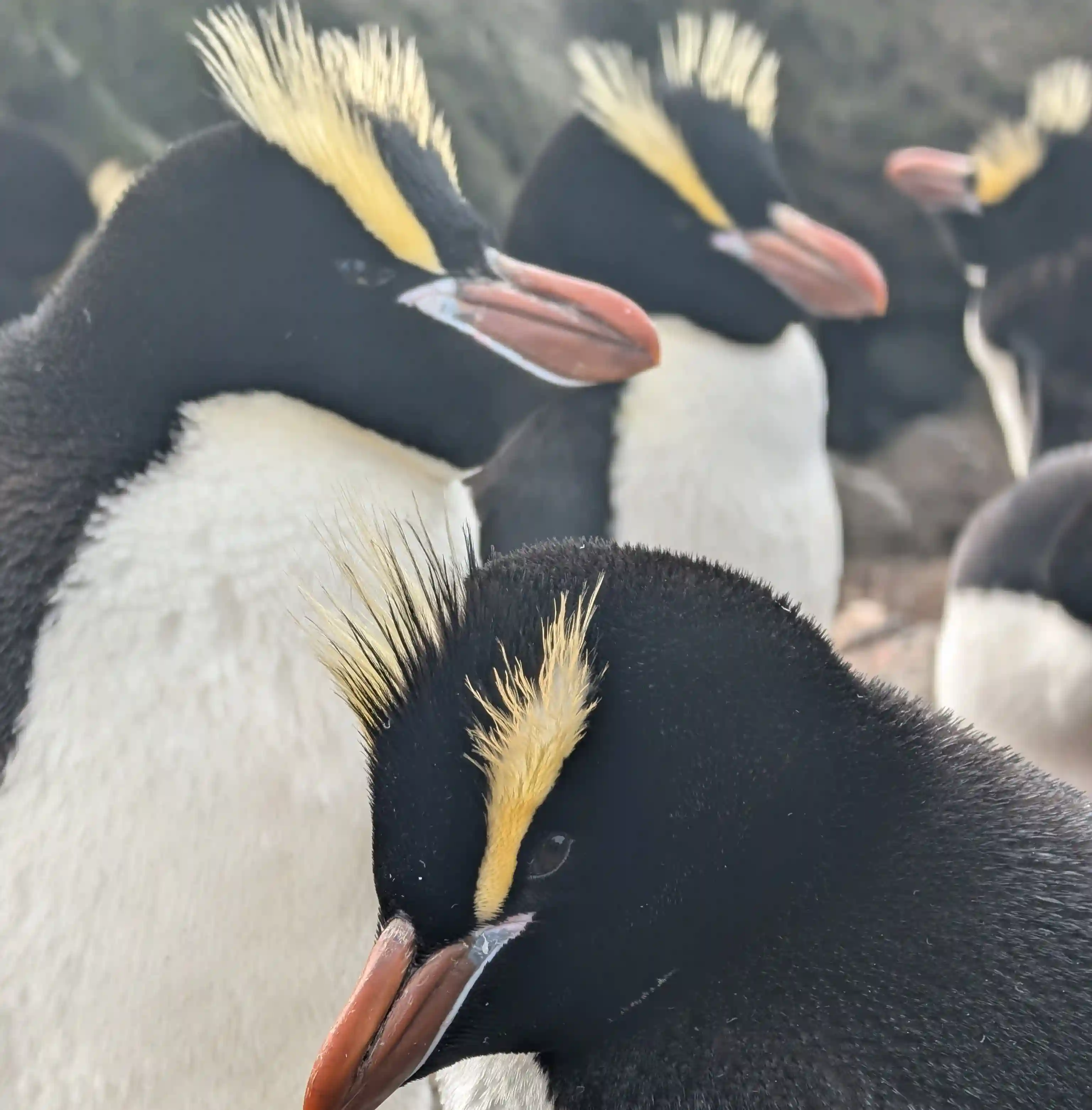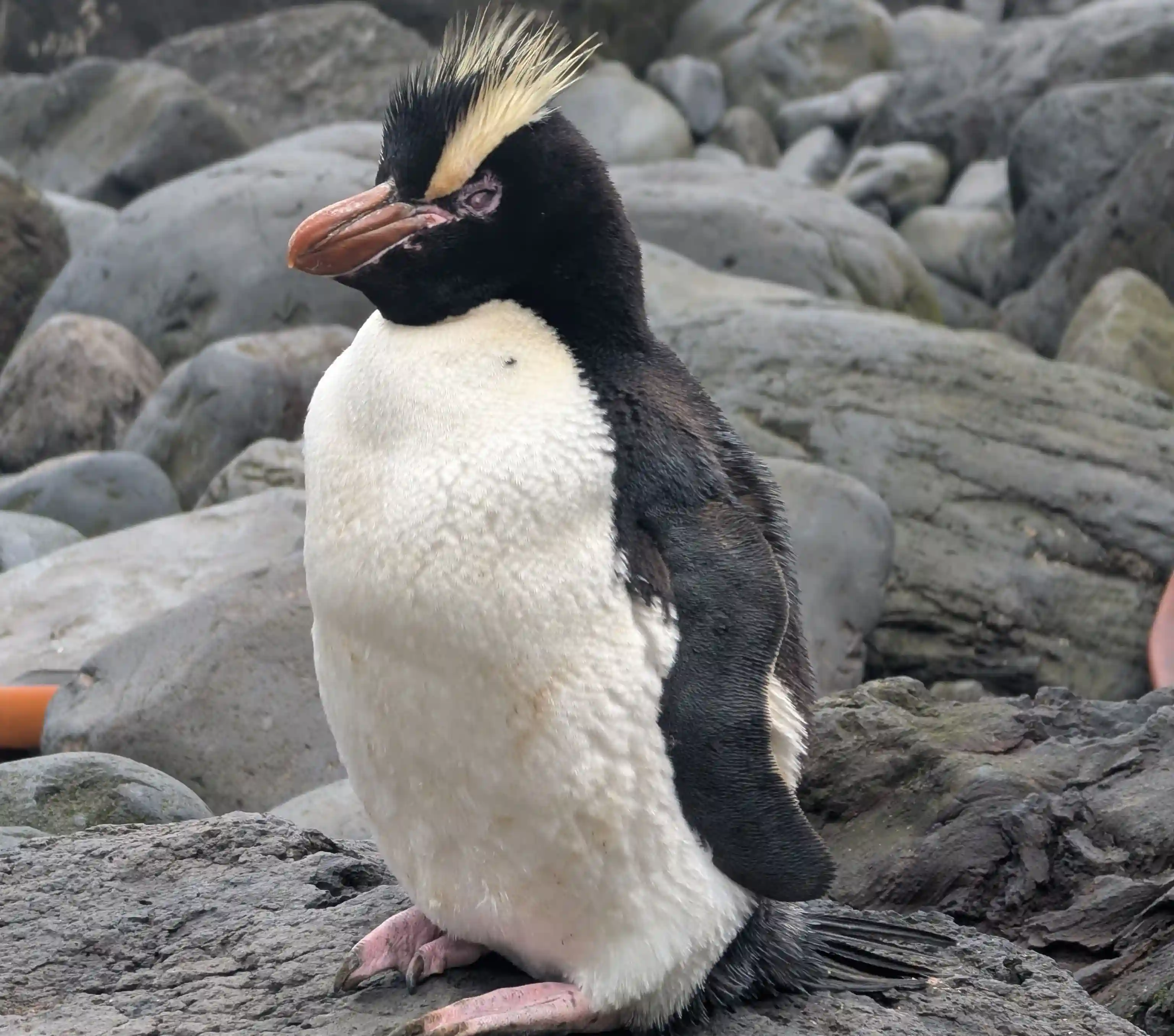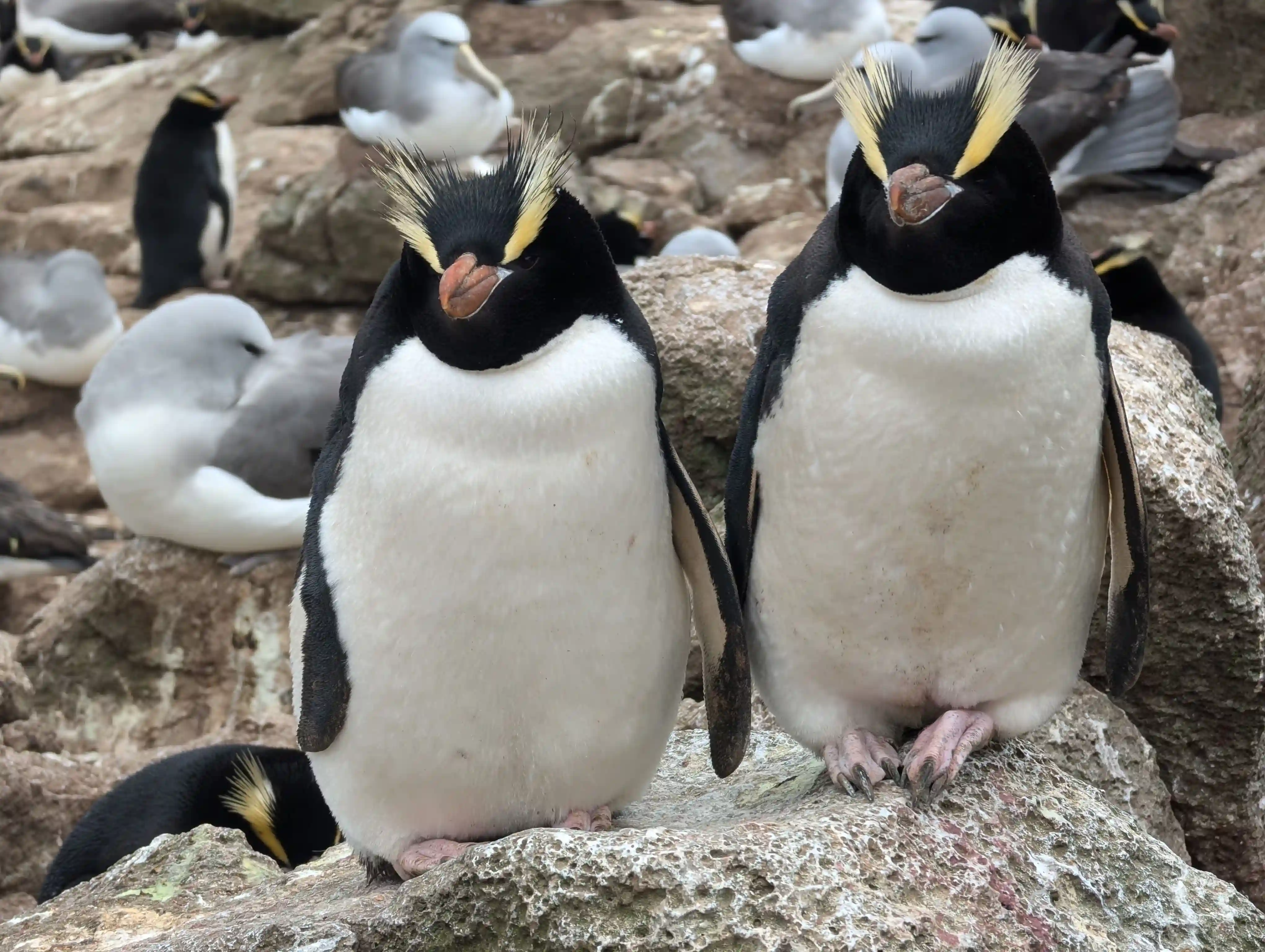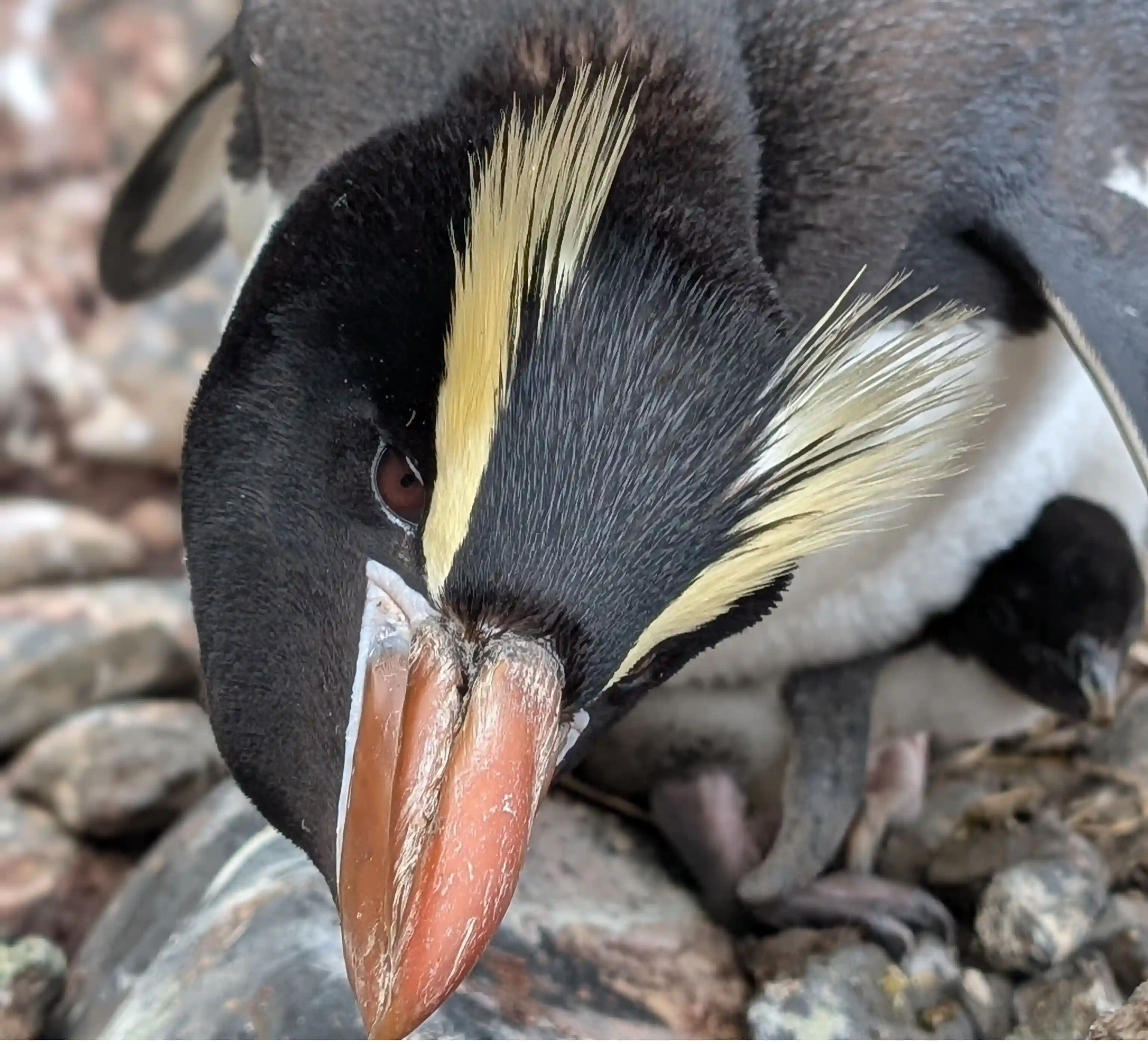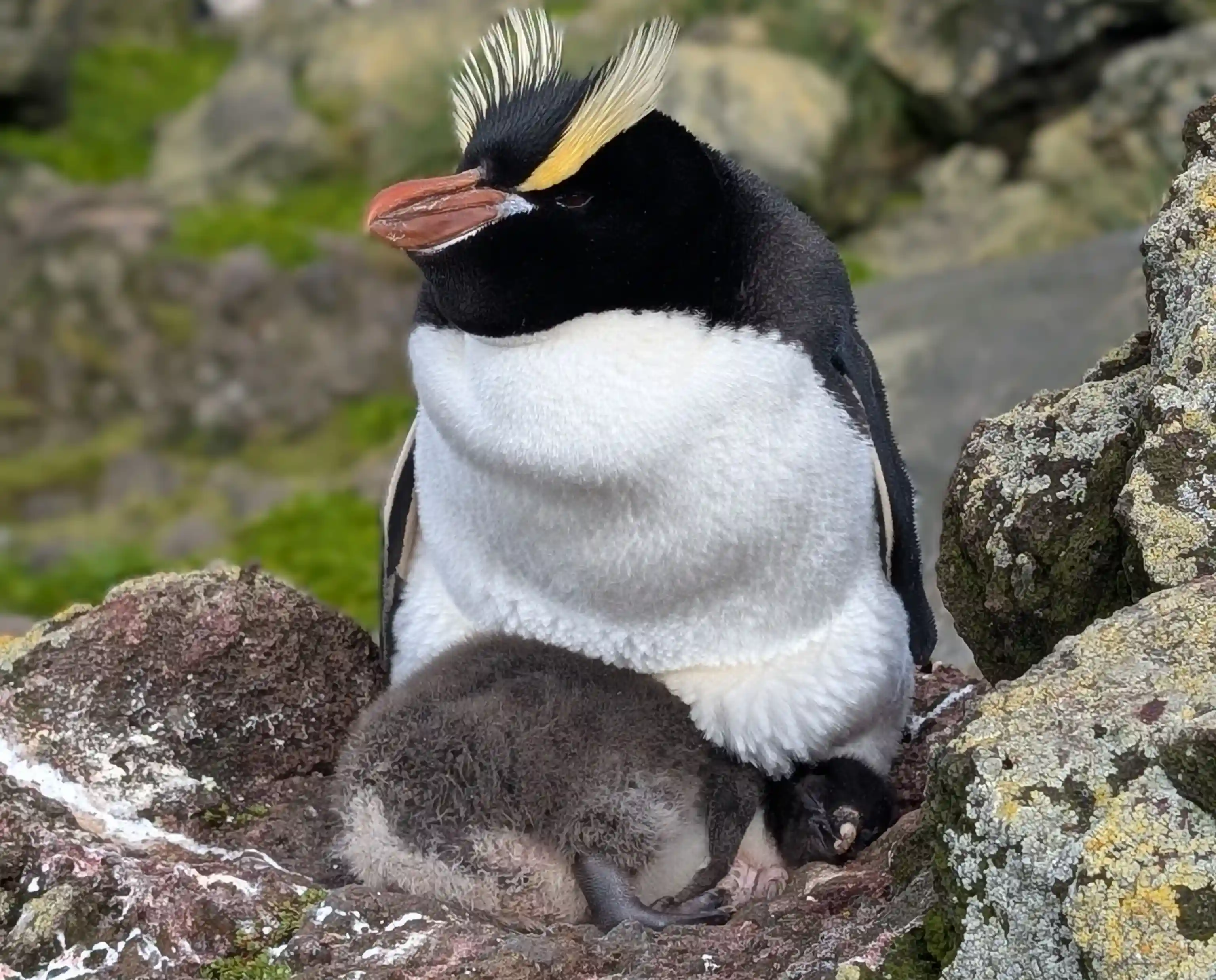Erect-crested Penguin - Eudyptes sclateri
- DESCRIPTION
- A medium-sized penguin (68 cm; 3.5 – 5.5 kg weight). Similar to other crested penguins, especially Fiordland and Snares penguins. Upright yellow feather plumes of their crests. The superciliary stripe starts more towards the base of the bill than it does on Fiordland and Snares penguins. Feathers are black on the dorsal side of the body, the face, and the tail; and white on the undersides. Flippers are black on their dorsal side, with a white trailing edge, and white on the ventral side. The bill is orange with a pronounced hook and a white line of skin at the base of the mandible that forms a distinct gular pouch at the base of the gape. Brown eyes; legs and feet are pink. Immature have a pale yellow superciliary stripe without the upright plumes, and a mottled grey throat.
- DISTRIBUTION
-
Islands to S and SE of New Zealand, most of the population breeding on Bounty
and Antipodes Is. Migration breeders, after their post-breeding moult
Erect-crested penguins go to the sea where their winter distribution is unknown.
Some birds molt regularly on other subantarctic islands south of New Zealand
and, less commonly, on the South Island of New Zealand.
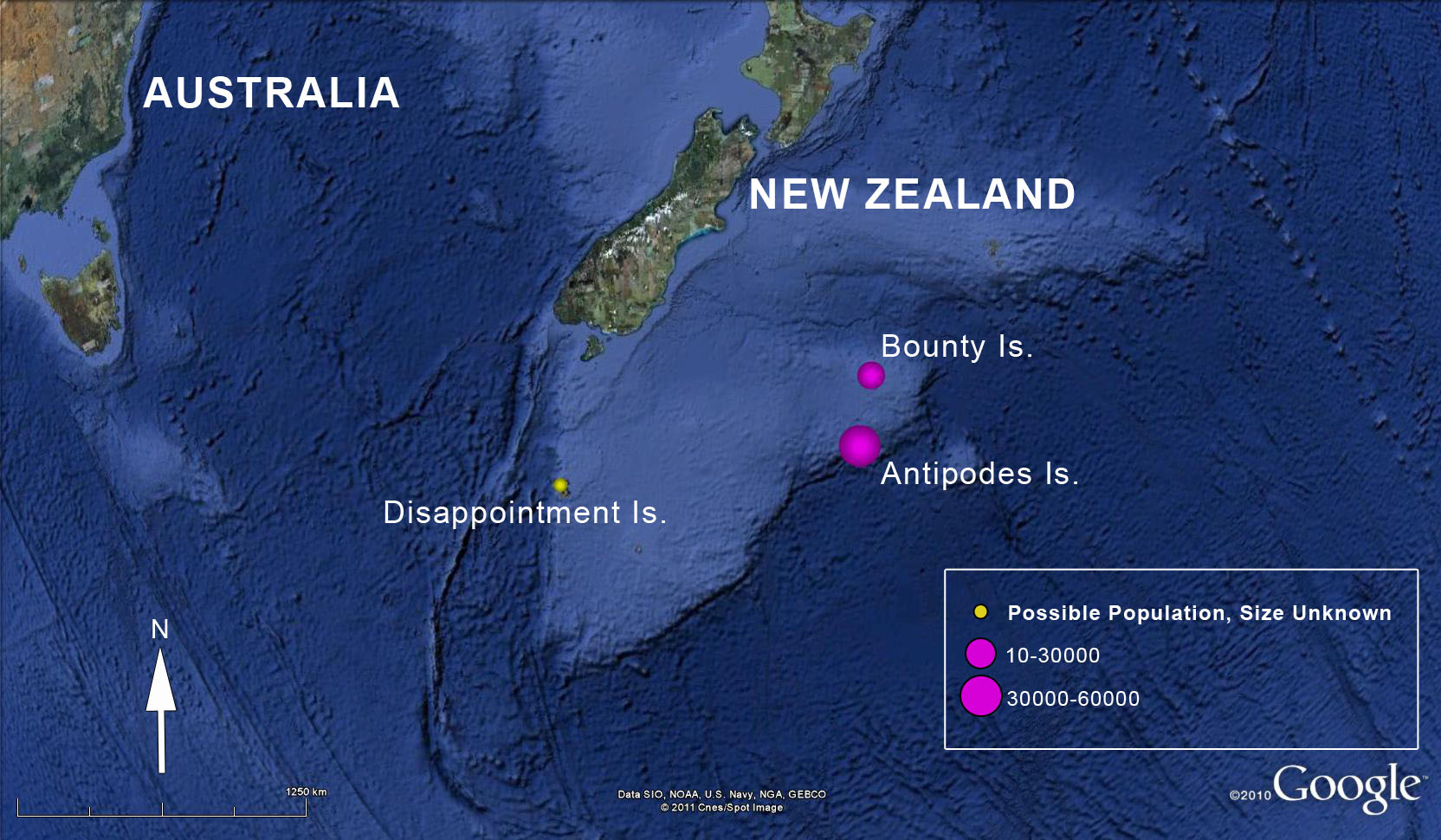
- HABITAT
- marine, nests on rocky coasts, cliffs, beaches, or rock platforms. Rudimentary nest made of few small stones and a little vegetation. Offshore feeder.
- BREEDING BIOLOGY
- They arrive at their colonies in September. In October they lay two eggs. The laying interval is the longest for any penguin: 5.4 days between the first-laid and second-laid egg, and the second egg is 85% heavier than the first one. Both parents incubate during around one month.
- FEEDING
- The diet has not been studied, but probably consists on krill, fish and cephalopods like other crested penguins.
- REPRODUCTIVE POPULATION
- 81,000 pairs
- Conservation status (IUCN) and threats
- "Endangered” (IUCN Red List 2018), based on both their restricted range, which makes it vulnerable to local perturbations in the environment, and to the evidence that suggests significant population declines in recent times. There are no threats identified for this species, due to their isolation from human activities.
- SOURCE
- Davis, L.S. 2013. Erected-Crested Penguin (Eudyptes sclateri). In PENGUINS: NATURAL HISTORY AND CONSERVATION (García Borboroglu, P.G. and Boersma P.D. eds.) University of Washington Press, Seattle U.S.A. 328 pp.
